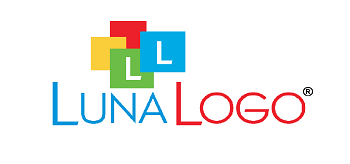Here are several Reasons:
In today’s fast-paced design world, automation is everywhere — from photo filters to AI-powered art generation. While auto-tracing software can be a tempting shortcut for converting raster images (like JPEGs or PNGs) into vector formats (like SVG or EPS), professional designers and studios often prefer manual vectorization. But why choose a more time-consuming method when technology offers faster alternatives?
Let’s dive into the reasons why manual vectorization remains the gold standard in professional design.
1. Precision and Clean Lines
Auto-tracing tools attempt to detect edges and color transitions automatically, but they often produce rough, uneven paths or extra nodes that compromise the quality of the vector. These inaccuracies can lead to jagged lines or distorted shapes — especially when the source image has noise or compression artifacts.
Manual vectorization, on the other hand, allows designers to create clean, smooth curves and sharp corners, preserving the integrity of the original artwork while optimizing it for scalability.
2. Creative Control
Every design has nuances — subtle gradients, intentional imperfections, or hand-drawn strokes that reflect the creator’s intent. Automatic tools often miss these details or interpret them incorrectly.
With manual vectorization, artists can decide what to keep, enhance, or simplify. They can intentionally adjust proportions, align elements, and apply design judgment — something no software can fully replicate.
3. Optimized File Sizes and Node Count
Auto-traced vectors often result in bloated files with excessive anchor points and unnecessary complexity. This can cause performance issues, especially for web use, large-format printing, or animation.
Manual tracing ensures minimal and efficient node placement, which leads to lighter, faster-loading files without sacrificing quality.
4. Better for Branding and Logos
When it comes to logos and brand assets, precision is critical. Misaligned paths or uneven shapes can dilute a brand’s visual identity. Many professional logo designers manually vectorize logos to meet exacting standards — ensuring consistency across print, digital, and product packaging.
5. Superior Results from Low-Quality Images
Auto-tracing tools struggle when working with low-resolution or pixelated images. They often create fuzzy or inaccurate results. A skilled designer, however, can interpret even a blurry image and reconstruct it accurately, using design knowledge to fill in gaps that machines can’t understand.
6. Scalability Without Surprises
Vectors are meant to scale infinitely without losing clarity. Manual vectorization guarantees that when you enlarge the artwork — for a billboard, apparel, or signage — there won’t be any unexpected distortions or jagged edges that sometimes appear in auto-traced work.
7. Customization and Refinement
Auto-tracing gives you a static result, while manual tracing is a flexible, iterative process. Designers can tweak shapes, adjust weights, and refine curves with pinpoint accuracy. This level of customization is especially valuable when creating icons, illustrations, or custom typography.
In Summary
While auto-tracing tools can be useful for quick drafts or casual projects, manual vectorization stands out for its quality, control, and professionalism. It’s the difference between automated approximation and handcrafted perfection.
When accuracy matters — as it does in branding, marketing, and high-end design — nothing beats the human touch.
Need help converting your logo or illustration into a high-quality vector file? Our team specializes in manual vectorization services that ensure precision and polish. Contact us today!
